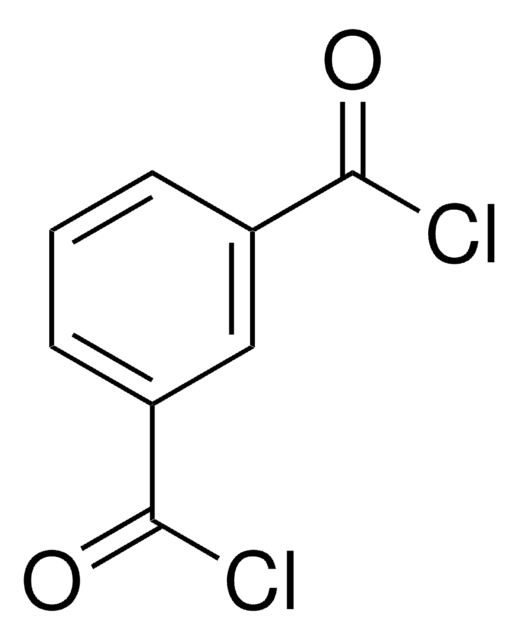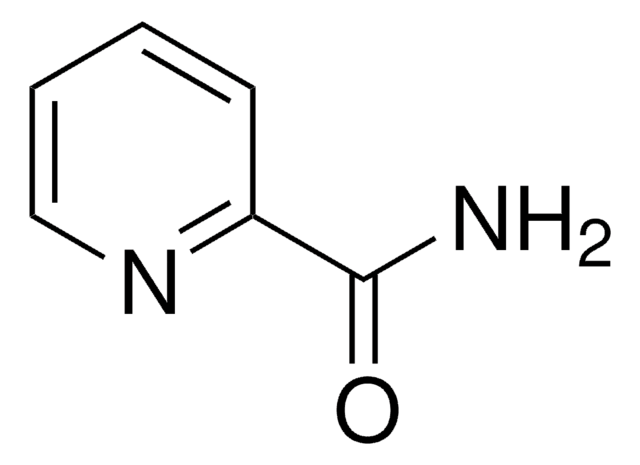120871
Terephthaloyl chloride
≥99%, flakes
Synonyme(s) :
Terephthalic acid chloride, Terephthaloyl dichloride
About This Item
Produits recommandés
Densité de vapeur
7 (vs air)
Pression de vapeur
0.02 mmHg ( 25 °C)
Pureté
≥99%
Forme
flakes
Point d'ébullition
266 °C (lit.)
Pf
79-81 °C (lit.)
Solubilité
ethanol: soluble 100 mg/mL, clear, colorless
Chaîne SMILES
ClC(=O)c1ccc(cc1)C(Cl)=O
InChI
1S/C8H4Cl2O2/c9-7(11)5-1-2-6(4-3-5)8(10)12/h1-4H
Clé InChI
LXEJRKJRKIFVNY-UHFFFAOYSA-N
Vous recherchez des produits similaires ? Visite Guide de comparaison des produits
Catégories apparentées
Description générale
Application
Informations légales
Mention d'avertissement
Danger
Mentions de danger
Classification des risques
Acute Tox. 3 Inhalation - Eye Dam. 1 - Skin Corr. 1A - STOT SE 3
Organes cibles
Respiratory system
Code de la classe de stockage
6.1A - Combustible acute toxic Cat. 1 and 2 / very toxic hazardous materials
Classe de danger pour l'eau (WGK)
WGK 1
Point d'éclair (°F)
356.0 °F - closed cup
Point d'éclair (°C)
180 °C - closed cup
Équipement de protection individuelle
Eyeshields, Faceshields, Gloves, type P3 (EN 143) respirator cartridges
Certificats d'analyse (COA)
Recherchez un Certificats d'analyse (COA) en saisissant le numéro de lot du produit. Les numéros de lot figurent sur l'étiquette du produit après les mots "Lot" ou "Batch".
Déjà en possession de ce produit ?
Retrouvez la documentation relative aux produits que vous avez récemment achetés dans la Bibliothèque de documents.
Les clients ont également consulté
Articles
Atomic layer deposition meets various needs including semiconductor device miniaturization and nanoparticle coating.
Notre équipe de scientifiques dispose d'une expérience dans tous les secteurs de la recherche, notamment en sciences de la vie, science des matériaux, synthèse chimique, chromatographie, analyse et dans de nombreux autres domaines..
Contacter notre Service technique












